2019.03.29Field Report
Being a Part of the "AKARI" Bringing Light to People Project, Report by Volunteer Employee Reporters
2013.10.01 Field Report
The solar lanterns we donated to the Kamonohashi Project, which works to resolve human trafficking and rural poverty issues, were used as lighting in a community factory supporting the independence of women.
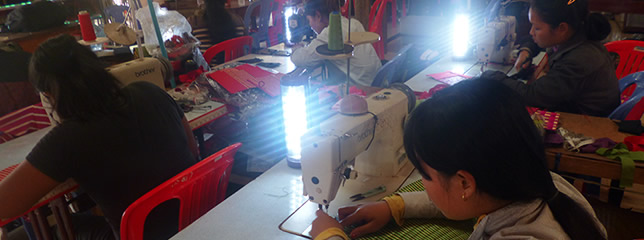
Hello, this is Akira Hoshi reporting from the CSR & Citizenship Group.
I visited Cambodia to check how solar lanterns donated to NPOs/NGOs in March 2012 are being put to use. In continuation to the last report, I headed to the project area of the International NGO Kamonohashi Project.
Siem Reap, the tourist hub home to the world heritage Angkor, is visited by over a million tourists each year. Although smaller than the capital of Phnom Penh, the city has many accommodation facilities including high-class Western-style hotels, indicating that it is prospering as a tourist city. Taking just a 15 minute drive from the city, however, a rural landscape unfolds before you.

Left: Angkor Wat / Right: Bayon Temple at Angkor Thom
Based in Siem Reap, the Kamonohashi Project works to support orphanages, assist police training and promote the independence of rural women, with the objective of eradicating child sexual trafficking and exploitation.
In 2006, the project established a community factory as a workplace for rural women. Various products such as book covers, pen cases, commuter pass holders, business card cases, coasters, placemats and sandals are handmade out of rush grass by the women and are sold to tourists at outlet stores and folk craft shops. (Customers in Japan can purchase the products online.)
The Kamonohashi Project outlet store is located at the corner of a market in Siem Reap. The vividly colored products made in the factory are exhibited in this tidy little shop. Here we met with the Kamonohashi Project staff member Ms. Kameyama and headed off to the community factory.
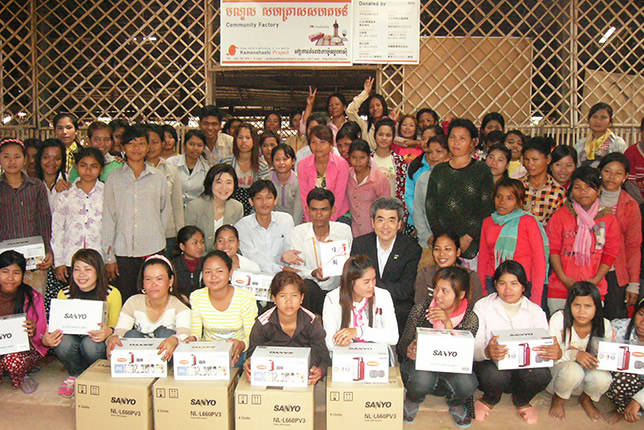
The donation ceremony held at the community factory in March 2012.
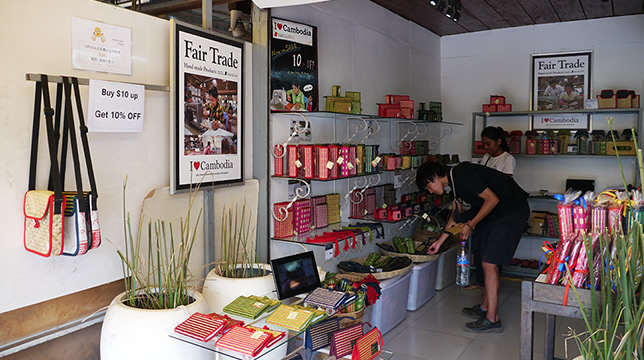
The outlet store in Siem Reap
After travelling approximately 30 minutes out of Siem Reap by car, we arrived at the Khchass Commune, where the factory is located. Although this village lies alongside a national highway, the electricity is not available because of the distance from the city.
Chum reap suor! (Hello!)
When they saw we had arrived, everyone stopped work and gathered to welcome us.
There are many young women working at the community factory.
After greeting us, they returned to their posts and went back to focus on their individual work of cutting the rush grass, dyeing, weaving on a loom, sewing by machine, or carrying out product inspections.
There is a window in the roof of the community factory to let in sunlight. When we arrived at around 2PM, the room seemed perfectly bright. However, when dusk falls it gets very dark and this can lead to the employees experiencing eyestrain. It also becomes gloomy on cloudy or rainy days.
The winter is particularly short of daylight and it gets dark early, which apparently leads to a decrease in efficiency and productivity, also resulting in quality issues.
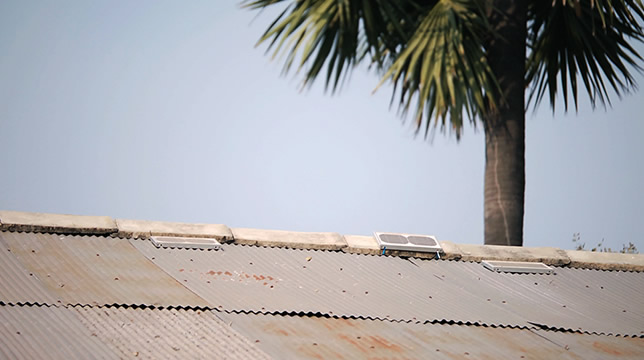
Solar panels installed on the roof to charge the solar lanterns.
In these conditions, the solar lanterns were being used as lighting for the entire factory and as individual lights for the employees engaging in work such as sewing, cutting and inspections. They have to look closely at their detailed handiwork, and in the past, many suffered from eyestrain and headaches. I was very happy to hear that such symptoms have been alleviated thanks to the light of solar lanterns.
Furthermore, the solar lanterns were also used for indoor light in the warehouse, as well as around the outside of the factory to prevent theft at night.
At the Khmer literacy class held during the lunch break to support self-reliance of employees, people with a high attendance can borrow solar lanterns in recognition of their efforts. They are overjoyed to be able to use the light for their study at home in the evenings.
In this factory tour I found that the solar lanterns were being effectively used through various methods in the Kamonohashi Project.
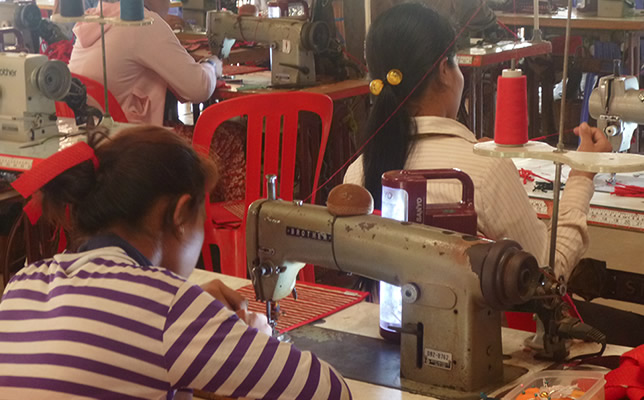
Solar lanterns are serving as personal lighting.
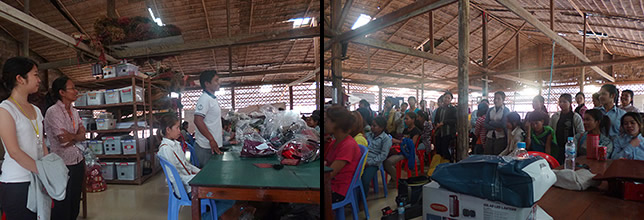
The employees meeting are held after work at the end of the day.
That night at the project office in Siem Reap, I listened to Mr. Kenta Aoki, vice president of the Kamonohashi Project and manager of operations in Cambodia.
"Many of the girls trafficked or forced into child prostitution come from poor rural villages. To make money, they have to work away from home, where many are tricked into prostitution. In order to solve the poverty issues underlying human trafficking, we operate the community factory to increase the income of the rural women, so that they can become economically and mentally independent with their own skills."
The Kamonohashi Project recognizes that poverty is the underlying cause of human trafficking, and works on this issue through business activities. I very much hope that the initiative will expand in the future.
You can also watch the movie below about how solar lanterns are used in the Kamonohashi Project. Take a look at it, and listen to the real stories of local people.